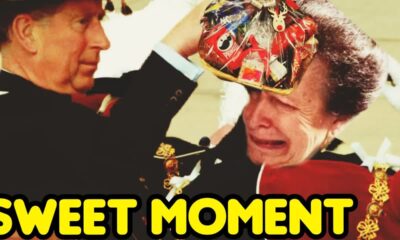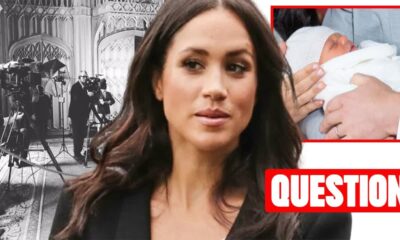Must Read
The Sussex Saga: A Royal Drama of Publicity and Perception
In the ever-evolving narrative surrounding Prince Harry and Meghan Markle, new revelations continue to surface, prompting scrutiny and debate.
The latest focus centers on their children, particularly Lilibet, whose name has allegedly surged in popularity across American baby name charts.
However, as we dig deeper, questions arise about the authenticity of this claim and the motives behind it.
The stark contrast between how the royal family traditionally shares their joys and milestones and the Sussexes' approach is striking.
When Catherine and William welcomed their children, the world witnessed genuine moments of happiness, from their first public appearances to cherished family events.
In contrast, the glimpses we get of Archie and Lilibet often feel orchestrated, leaving many to wonder about the true nature of their upbringing.
Having followed royal affairs for years, it's hard not to notice a pattern in Meghan's public relations strategy.
Every time public interest seems to wane, a new story emerges, seemingly designed to recapture the spotlight.
The timing of these narratives raises eyebrows, especially when they coincide with significant events involving the working royals.
It feels almost like a calculated move to overshadow their achievements.
One particularly irksome aspect is the use of the name “Lilibet.”
This was not just a nickname; it was a term of endearment for the late Queen Elizabeth II.
To see it commodified for publicity purposes feels disrespectful, especially given the deep familial ties it represents.
It's as if the Sussexes have transformed intimate family matters into tools for garnering attention.
The differences in how the Wales children and the Sussex children are presented to the public couldn't be more pronounced.
George, Charlotte, and Louis are seen enjoying their childhood while fulfilling their royal duties with grace.
Meanwhile, Archie and Lilibet remain shrouded in mystery, often appearing only when it serves a narrative or PR goal.
This disparity raises questions about the values being instilled in both sets of children.
Critics might argue that my perspective is overly harsh, but it's essential to examine the evidence.
Since stepping back from royal duties, the Sussexes have provided scant proof of their children's everyday lives.
This lack of transparency contrasts sharply with the Wales family, who have consistently shared their experiences with the public, fostering a sense of connection and trust.
Recent conversations with sources close to the royal family reveal frustration regarding the Sussexes' tactics.
While William and Catherine maintain a dignified silence, the ongoing circus created by Harry and Meghan disrupts the monarchy's efforts to serve the public.
The contrast in their approaches highlights the core values of royalty: service, duty, and respect for tradition.
The timing of certain announcements, particularly those involving Lilibet, raises suspicions about intent.
For instance, when Catherine underwent a medical procedure, news about Lilibet's name suddenly became a hot topic.
Coincidence?
It's hard to believe, given the established pattern of strategic media releases from the Sussex camp.
What's even more concerning is the impact of these actions on the royal institution itself.
The monarchy is built on centuries of tradition, and the actions of Harry and Meghan seem to undermine the very essence of royal duty.
By attempting to create an alternative royal narrative, they risk diluting the significance of the monarchy and its role in society.
As we reflect on the contrasting styles of the two families, it becomes clear that Catherine embodies the true spirit of modern royalty.
Her dedication to causes like early childhood development demonstrates a commitment to creating a positive impact, while the Sussexes appear more focused on personal branding and media manipulation.
Ultimately, the ongoing saga of the Sussexes serves as a cautionary tale about the balance between public life and personal privacy.
While the desire for fame and attention is understandable, it raises critical questions about the responsibilities that come with royal status.
The legacy of the monarchy should be one of service, not spectacle.
As we move forward, it's crucial to remain vigilant and discerning about the narratives presented to us.
The royal family, particularly William and Catherine, continues to exemplify the dignity and grace expected of them.
In contrast, the Sussexes' approach often leaves much to be desired, highlighting the fundamental differences between those committed to duty and those seeking fame.




















